Knossos palace. Travelogue about the island of Crete.
Кносский дворец. Путевые заметки о Крите.
Just 25 minutes
by bus from the center of Heraklion, you get to the world of Minoan
civilization-the Palace of Knossos. Depending on your archaeological
preferences you can spend from 1 to 3 hours here. It is best to come here early
in the morning (the Museum opens at 8 am), when not yet gathered a lot of
numerical tourist groups, and you can freely wander among the ruins of the once
majestic buildings.
Всего 25 минут езды на рейсовом автобусе от центра
Ираклиона, и Вы попадаете в мир Минойской цивилизации – Кносский дворец. В
зависимости от Ваших археологических пристрастий Вы можете провести здесь от 1
до 3 часов. Лучше всего приехать сюда рано утром (музей открывается в 8 утра),
когда ещё не собрались многочисленные
туристические группы, и Вы можете свободно побродить среди развалин некогда
величественного сооружения.
What about
Minos? He was, in terms of mythology, the old king who ruled Crete during its
rise as a seapower and its development into the important civilization ever to
flower in the Mediterranean. It was a stepping-stone between Egypt and Athens,
on the one hand, and between Egypt, Athens, and Asia Minor on the other. During
the period of its greatest glory, its succeeded in combining and refining
dissimilar influences from the neighbouring countries and stamping them with a
specific Cretan personality. Yet, as always, accurate dating remains a bugbear;
were there many Minoses – was Minos a generic name for all the rules of Crete?
Or did they all descend from one? At any rate, the ancient myth of the Cretan
civilization has clung on so successfully that, when Sir Arthur Evans was
casting about for a frame into which to fit all his exciting new finds at
Knossos, he took the old name and christened the civilization he was examining
a Minoan one.
Что можно сказать о Миносе? Он был, с точки зрения
мифологии, старым королём, который правил Критом во время его подъёма в
качестве морской державы и его развития в важнейшую цивилизацию, из когда-либо расцветающих
в Средиземноморье. Это была ступенька между Египтом и Афинами, с одной стороны,
и между Египтом, Афинами и Малой Азией - с другой. В период своей величайшей
славы ей удалось объединить и усовершенствовать разные влияния соседних стран и
перековать их в уникальный критский феномен. Тем не менее, как всегда, точная интерпретация
остаётся неясной; было ли много Миносов – или было Минос, как общее название
для всех правителей Крита? Или они все произошли от одного? Во всяком случае,
древний миф о Критской цивилизации прицепился так успешно, что, когда сэр Артур
Эванс подбирал структуру, в которую вписывались все его захватывающие новые
находки в Кноссе, он взял старое имя и окрестил цивилизацию, которую он изучал
минойской.
The era of
Palace civilizations in Crete spans a total of about 600 years and falls into
two main periods: 1) old palaces (2000-1700 BC) and 2) new palaces (1700-1400
BC). Already at the beginning of the second millennium, several independent
states formed on the island. Each of them included several dozens of small
community settlements, grouped around one of the four large palaces now known
to archaeologists. These include the palaces of Knossos, Festa, Mallia in
Central Crete and the Palace of Kato Zakro (Zakros) on the East coast of the
Island. Unfortunately, from existing in these places "old palaces"
survived only a little. Later buildings almost everywhere erased
their traces.
Эпоха дворцовых цивилизаций на Крите охватывает в
общей сложности около 600 лет и распадается на два основных периода: 1) старых
дворцов (2000-1700 гг. до н.э.) и 2) новых дворцов (1700-1400 гг. до н.э.). Уже
в начале II
тысячелетия на острове сложилось несколько самостоятельных государств. Каждое
из них включало по нескольку десятков небольших общинных поселений,
группировавшихся вокруг одного из четырёх известных сейчас археологам больших
дворцов. В это число входят дворцы Кносса, Феста, Маллии в центральной части
Крита и дворец Като Закро (Закрос) на восточном побережье Острова. К сожалению,
от существовавших в этих местах «старых дворцов» уцелело лишь немногое.
Позднейшая застройка почти повсюду стёрла их следы.
Around 1700 BC,
the palaces of Knossos, Festa, Mallia and Kato Zakro were destroyed, apparently
as a result of a strong earthquake. This disaster, however, only briefly halted
the development of Cretan culture. Soon on the site of the destroyed palaces
were built new buildings of the same type, mostly, apparently, preserved the
layout of its predecessors, although superior to their monumental and
magnificent architectural decoration. Thus, a new stage in the history of
Minoan Crete, known in science as the "period of new palaces", began.
Около 1700 г. до н.э. дворцы Кносса, Феста, Маллии и
Като Закро были разрушены, по всей видимости, в результате сильного
землетрясения. Эта катастрофа, однако, лишь ненадолго приостановила развитие
критской культуры. Вскоре на месте разрушенных дворцов были построены новые
здания того же типа, в основном, по-видимому, сохранившие планировку своих
предшественников, хотя и превосходящие их своей монументальностью и
великолепием архитектурного убранства. Таким образом, начался новый этап в
истории минойского Крита, известный в науке как «период новых дворцов».
The most
remarkable of the architectural structures of this period is the palace of
Minos in Knosso, which was opened by A. Evans. The Greeks called the palace of
Minos "the labyrinth." In Greek myths, a labyrinth is a huge building
with many rooms and corridors. The man who got into it, could not get out
without help, and inevitably died: in the depths of the palace lived a
bloodthirsty Minotaur. Evans 'excavations showed that the Greeks' stories about
the labyrinth had a certain soil. In Knossos, a really large building or even a
whole complex of buildings with a total area of 16,000 square meters, which
included about three hundred rooms of the most diverse purposes, was indeed
discovered.
Самое примечательное из архитектурных сооружений
этого периода – открытый А.Эвансом дворец Миноса в Кноссе. Греки называли
дворец Миноса «лабиринтом». В греческих мифах лабиринт – огромное здание с
множеством комнат и коридоров. Человек, попавший в него, уже не мог выбраться
без посторонней помощи и неизбежно погибал: в глубинах дворца обитал
кровожадный Минотавр. Раскопки Эванса показали, что рассказы греков о лабиринте
имели под собой определённую почву. В Кноссе
действительно было обнаружено огромное по размерам здание или даже целый
комплекс зданий общей площадью 16000
м.кв, включавший около трёхсот помещений самого разнообразного назначения.
The architecture
of the Cretan palaces is extremely unusual, unique and unlike anything else. With
its appearance, the Palace of Knossos resembled the most intricate theatrical
scenery in the open air.
This impression contributed
to the bizarre porticos with columns of unusual shape, thickened upwards, wide
stone steps of open terraces, numerous balconies and loggias, which were cut
through the walls of the Palace, flickering everywhere spots of frescoes.
Архитектура критских дворцов в высшей степени
необычна, своеобразна и ни на что не похожа. Своим внешним видом Кносский
дворец более всего напоминал затейливые театральные декорации под открытым
небом. Этому впечатлению способствовали причудливые портики с колонами
необычной формы, утолщавшимися кверху, широкие каменные ступени открытых
террас, многочисленные балконы и лоджии, которыми были прорезаны стены дворца,
мелькавшие повсюду пятна фресок.
The internal
layout of the Palace is extremely complex, even confusing. Living rooms,
utility rooms, connecting their corridors, courtyards and light wells are
located, at first glance, without any visible system and a clear plan, forming
some kind of ant hill or coral colony.
Внутренняя
планировка дворца отличается чрезвычайной сложностью, даже
запутанностью. Жилые комнаты, хозяйственные помещения, соединяющие их коридоры,
внутренние дворики и световые колодцы расположены, на первый взгляд, без всякой
видимой системы и чёткого плана, образуя какое-то подобие муравейника или
колонии кораллов.
Despite the
chaotic nature of the Palace building, it is still perceived as a single
architectural ensemble. This is largely due to the large rectangular courtyard
occupying the Central part of the Palace, with which all the main rooms that
were part of this huge complex were somehow connected. The yard was paved with
large plaster slabs and, apparently, was used not for economic needs, but for
some religious purposes. Perhaps this is where the so-called "game with
the bulls."
При всей хаотичности дворцовой постройки она всё же
воспринимается как единый архитектурный ансамбль. Во многом этому способствует
занимающий центральную часть дворца большой прямоугольный двор, с которым так
или иначе были связаны все основные помещения, входившие в состав этого
огромного комплекса. Двор был вымощен большими гипсовыми плитами и,
по-видимому, использовался не для хозяйственных надобностей, а для каких-то
культовых целей. Возможно,
именно здесь устраивались так называемые «игры с быками».
Despite the
known unsystematic internal development, the Palace was in abundance equipped
with everything necessary to ensure that the life of its inhabitants was calm
and comfortable. The builders of the palace took care of such essential
elements of comfort as water and sewage. An original water
supply system was also discovered.
Несмотря на известную бессистемность внутренней
застройки, дворец был в избытке снабжён всем необходимым для того, чтобы жизнь
его обитателей была спокойной и удобной. Строители дворца позаботились о таких
важнейших элементах комфорта, как водопровод и канализация. Была обнаружена также оригинально устроенная система водоснабжения.
Of particular
interest is the wall painting that adorned the inner chambers of the palace, corridors
and porticoes of the palace. The two main features distinguish the frescoes of
the Knossos Palace from other works of the same genre found in other places,
for example in Egypt: firstly, the high color skills of the artists who created
them, their peculiar sense of color and, secondly, completely exceptional art
in transmitting the movement of people and animals.
Особый интерес представляет настенная живопись,
украшавшая внутренние покои дворца, коридоры и портики дворца. Две основные
особенности отличают фрески Кносского дворца от других произведений этого же
жанра, найденных в других местах, например в Египте: это, во-первых, высокое
колористическое мастерство создавших их художников, свойственное им обострённое
чувство цвета и, во-вторых, совершенно исключительное искусство в передаче
движения людей и животных.
A paradoxical
fact that struck archaeologists: all the Cretan palaces, including Knossos,
remained for almost all of its history. In
the hothouse atmosphere of the island with its fertile Mediterranean climate,
ever-clear sky and ever-blue sea there was a kind of Minoan culture,
reminiscent of a fragile strange plant, there was a "national"
character of Minoans with such features, clearly revealed in the Cretan art as
peacefulness, delicate artistic taste, cheerfulness.
Парадоксальный факт, поразивший археологов: все
критские дворцы, включая и Кносский, оставались на протяжении почти всей своей
истории неукреплёнными. В тепличной атмосфере острова с его благодатным
средиземноморским климатом, вечно ясным небом и вечно голубым морем сложилась
своеобразная минойская культура, напоминающая хрупкое диковинное растение,
сложился «национальный» характер минойцев с такими его чертами, ярко
раскрывающимися в критском искусстве, как миролюбие, тонкий художественный
вкус, жизнерадостность.














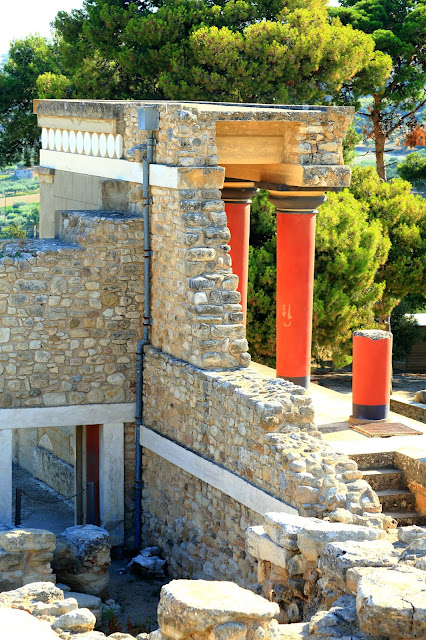
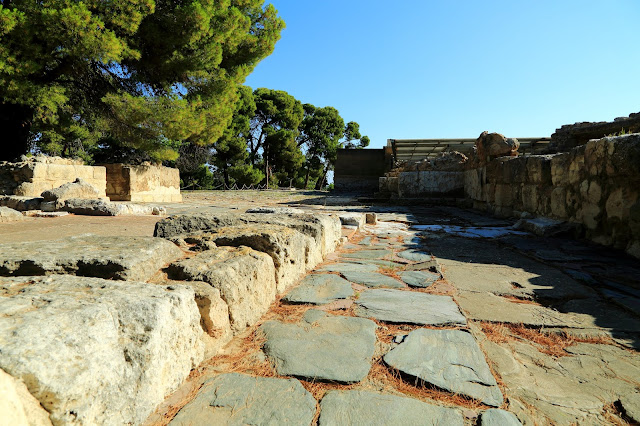




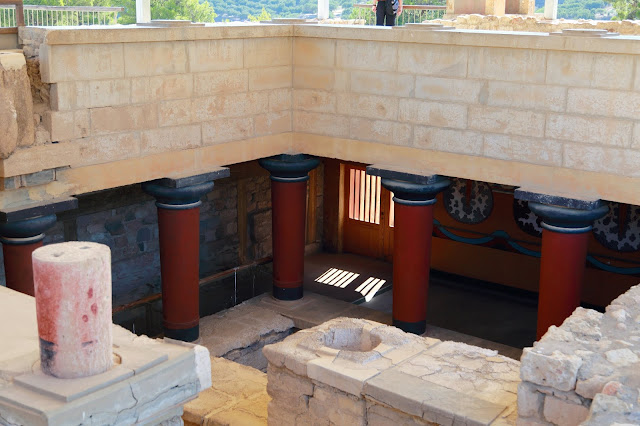









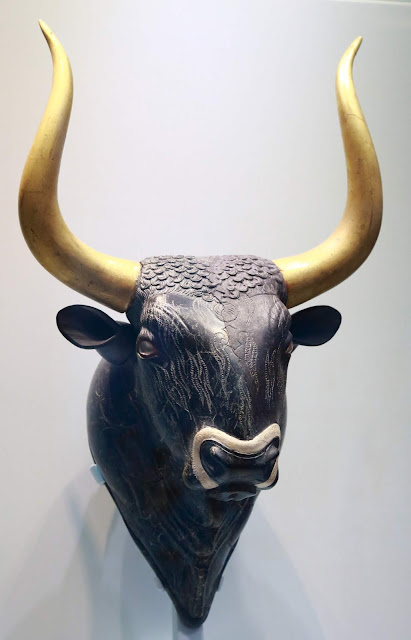
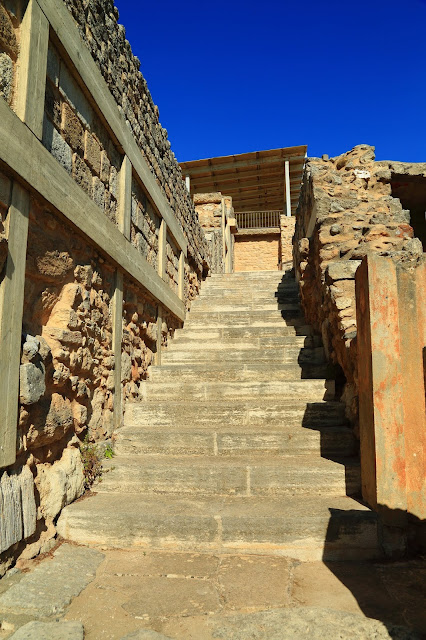


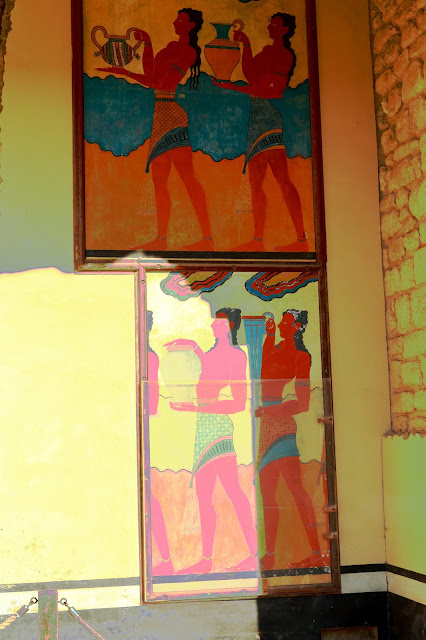



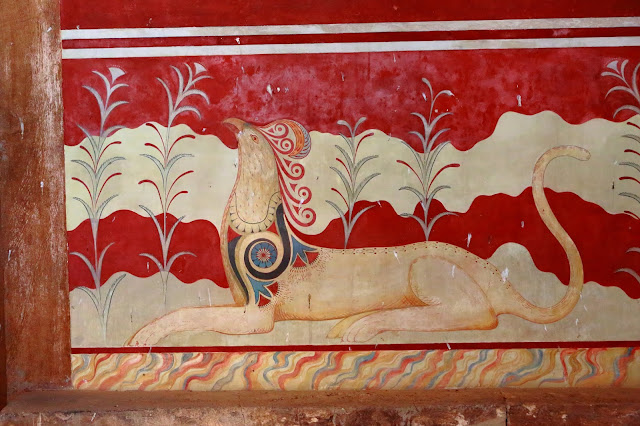
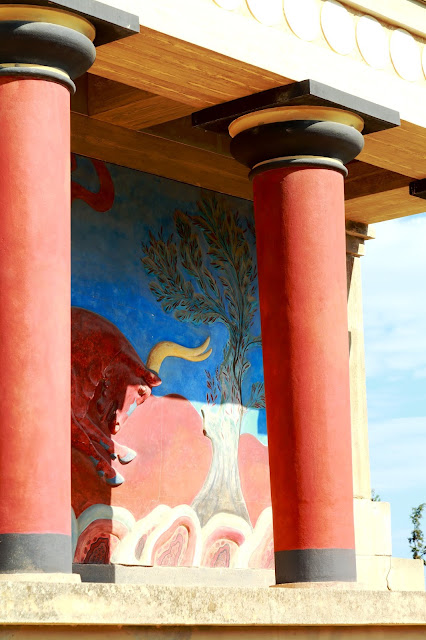
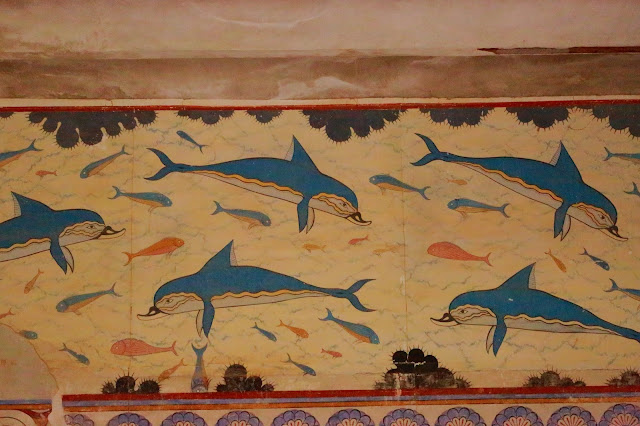



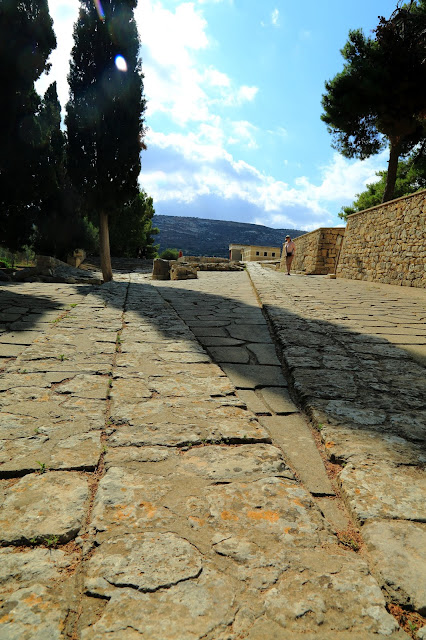

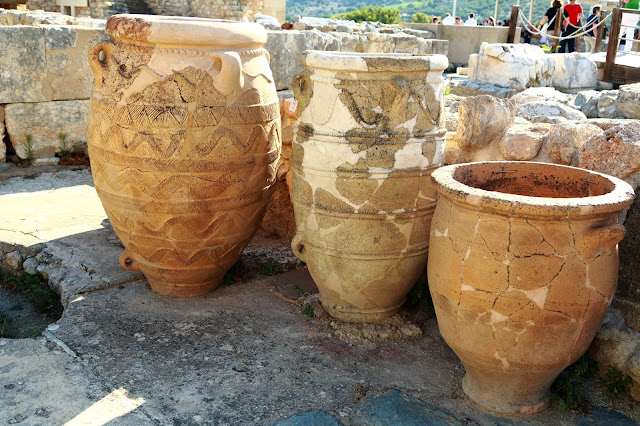
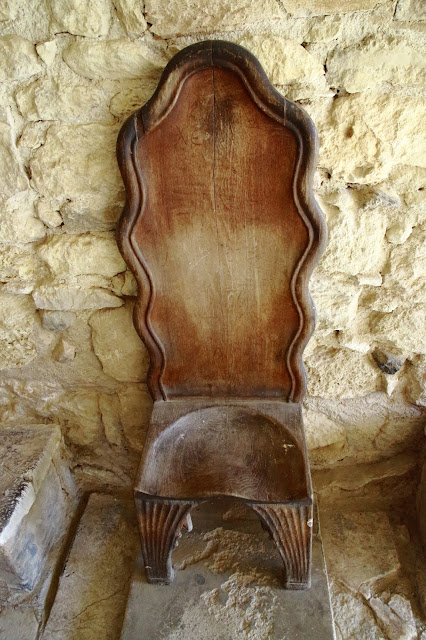
Спасибо! Чудесно! И синее критское небо!
ОтветитьУдалить